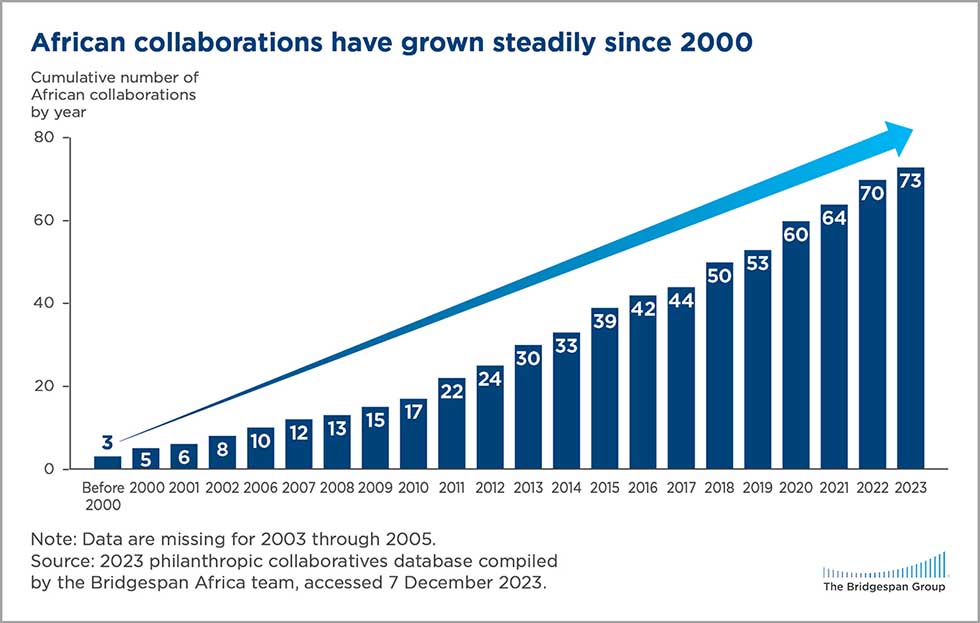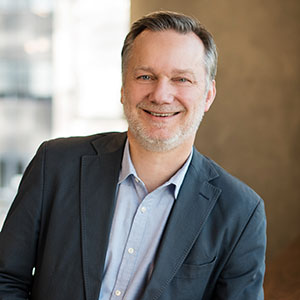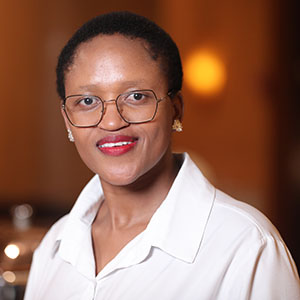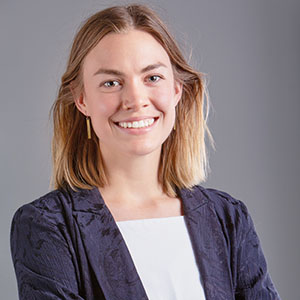Executive Summary
Over the past two decades, philanthropic collaboration has grown steadily across the African continent as funders increasingly acknowledge that they need to work together towards common goals. Today, African and non-African donors participate in over 130 collaborations, most of which are multi-stakeholder affairs involving different combinations of governments, businesses, and nonprofits.
The growing appeal of collaborations reflects the potential to achieve greater impact when funders pool resources in innovative ways to address education, health, gender, climate, economic development, and other issues. African funders also emphasise the power of collaboration to develop and deploy distinctly African solutions to pervasive societal needs.
Download a PDF of the full report
Of the 131 philanthropic collaborations we identified (admittedly, it’s not an exhaustive list), 73 focus exclusively on Africa, and all but three were founded since 2000. We call them “African collaborations” to distinguish them from those that are global in scope and include investments in Africa. We call these “global collaborations.” By a large margin, African funders—those headquartered on the continent—gravitate towards African collaborations. African collaborations have much smaller budgets, on average, than global collaborations: 60 percent of African collaborations have budgets under $10 million, and 70 percent of global collaborations have annual budgets exceeding $10 million.

Collaboration happens on a sliding scale of coordination, ranging from informal networking and knowledge sharing to more formal efforts that pool money and structure partnerships to achieve specific results. So we refined our list by screening for all that are co-created by three or more independent actors, including at least one philanthropist or philanthropy, and pursue a shared vision and strategy for achieving social impact using pooled resources and prearranged governance mechanisms. We call these partnerships “collaboratives.”
Forty-one African collaborations fit this definition, as did 34 global collaborations, leaving us with a set of 75 formal, structured collaboratives. Eight of the 41 African collaboratives derive their funding exclusively from African sources and 12 have solely non-African funders; the remainder receive funds from African and non-African funders.
Regardless of funding source, African collaboratives share important operational characteristics. Perhaps most importantly, many seek government as a strategic partner. Government alone is positioned to adopt and spread successful collaborative-led innovations in areas such as education and health care, where government has extensive infrastructure. “In South Africa, it is very hard to imagine any systemic change will result unless government is involved,” says James Keevy, CEO of JET Education Services, a nonprofit based in Johannesburg that promotes evidence-based approaches to improving education. By contrast, collaboratives in the United States are primarily made up of donors.
African collaboratives also seek private-sector partners. “Partnerships are critical for achieving developmental goals,” says Giles Gillett, CEO of the National Association of Social Change Entities in Education in South Africa. “The scope, scale, and complexity of the challenges require strong cross-sector partnerships involving deep collaboration between the public sector, private sector, and the NGO community.”
This analysis emerged from a research project initiated by The Bridgespan Group and supported by the Bill & Melinda Gates Foundation. The project set out to understand the philanthropic collaborative landscape in Africa. We relied most heavily on information and experiences derived from interviews with more than 40 African and non-African funders, collaborative leaders, and sector experts with knowledge of collaboration taking place primarily in sub-Saharan Africa.
Looking ahead, there’s reason to believe that collaborations have room to grow, in part because African governments welcome partnerships initiated and driven by philanthropy. In addition, the number of African philanthropists is rising as wealth across the continent grows. Today, Africa is home to 23 billionaires and 138,000 millionaires, with the latter figure expected to rise by 42 percent over the next decade.
Within this context, African funder collaboratives likely will continue to increase in number and ambition. Doing so, however, will require concerted efforts on the part of all the players involved. From our interviewees, we distilled a range of advice for both non-African and African funders in hopes that what we learned can aid all funders to do more and better collaboration over the years ahead.








